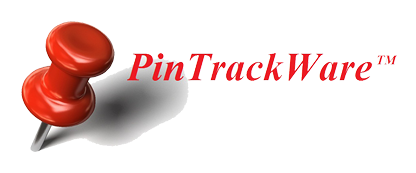Postapproval Monitoring
Excerpt From
“Guide for the Care and Use of Laboratory Animals”
(Eighth edition from the National Research Council)
Continuing IACUC oversight of animal activities is required by federal laws, regulations, and policies. A variety of mechanisms can be used to facilitate ongoing protocol assessment and regulatory compliance. Postapproval monitoring (PAM) is considered here in the broadest sense, consisting of all types of protocol monitoring after the IACUC's initial protocol approval.
PAM helps ensure the well-being of the animals and may also provide opportunities to refine research procedures. Methods include continuing protocol review; laboratory inspections (conducted either during regular facilities inspections or separately); veterinary or IACUC observation of selected procedures; observation of animals by animal care, veterinary, and IACUC staff and members; and external regulatory inspections and assessments. The IACUC, veterinary, animal care, and compliance staff may all conduct PAM, which may also serve as an educational tool.
Continuing protocol review typically consists of an annual update or review as well as the triennial review required by the PHS. The depth of such reviews varies from a cursory update to a full committee review of the entire protocol. Some institutions use the annual review as an opportunity for the investigator to submit proposed amendments for future procedures, to provide a description of any adverse or unanticipated events, and to provide updates on work progress. For the triennial review, many institutions require a complete new protocol submission and may request a progress report on the use of animals during the previous 3 years.
Both the Health Research Extension Act and the AWA require the IACUC to inspect animal care and use facilities, including sites used for animal surgeries, every 6 months. As part of a formal PAM program some institutions combine inspection of animal study sites with concurrent review of animal protocols. Based on risks to animals and their handlers, other study areas may require more or less frequent inspections. Examples of effective monitoring strategies include
- examination of surgical areas, including anesthetic equipment, use of appropriate aseptic technique, and handling and use of controlled substances
- review of protocol-related health and safety issues
- review of anesthetic and surgical records
- regular review of adverse or unexpected experimental outcomes affecting the animals
- observation of laboratory practices and procedures and comparison with approved protocols.
Institutions may also consider the use of veterinary staff and/or animal health technicians to observe increased risk procedures for adverse events (e.g., novel survival surgeries, pain studies, tumor growth studies) and report their findings for review by the IACUC. The level of formality and intensity of PAM should be tailored to institutional size and complexity, and in all cases should support a culture of care focusing on the animals' well-being (Klein and Bayne 2007). Regardless of the methods used or who conducts and coordinates the monitoring, PAM programs are more likely to succeed when the institution encourages an educational partnership with investigators (Banks and Norton 2008; Collins 2008; Dale 2008; Lowman 2008; Plante and James 2008; Van Sluyters 2008).
References
AAALAC [Association for Assessment and Accreditation of Laboratory Animal Care] International. 2003. Who's responsible for offsite animals? Connection Spring:6-11, 13. Available at www.aaalac.org/publications
ACLAM [American College of Laboratory Animal Medicine]. 1996. Adequate Veterinary Care. Available at http://www.aclam.org/Content/files/files/Public/Active/position_adeqvetcare.pdf ; accessed May 10, 2010.
Anderson LC. 2007. Institutional and IACUC responsibilities for animal care and use education and training programs. ILAR J 48:90-95.
AVMA [American Veterinary Medical Association]. 2008. Introduction to Ergonomics Guidelines for Veterinary Practice. April. Available at www.avma.org/issues/policy/ergonomics.asp ; accessed May 10, 2010.
AVMA. 2010. Programs accredited by the AVMA Committee on Veterinary Technician Education and Activities (CVTEA). Available at http://www.avma.org/education/cvea/vettech_programs/vettech_programs.asp ; accessed January 4, 2010.
Banks RE, Norton JN. 2008. A sample postapproval monitoring program in academia. ILAR J 49:402-418.
Bayne KA, Garnett NL. 2008. Mitigating risk, facilitating research. ILAR J 49:369-371.
Masterware Corporation
P.O. Box 25834
Shawnee Mission, KS 66225
(888) 465-9024 (Toll free)
(913) 681-0801 (Local)
click to email
.

